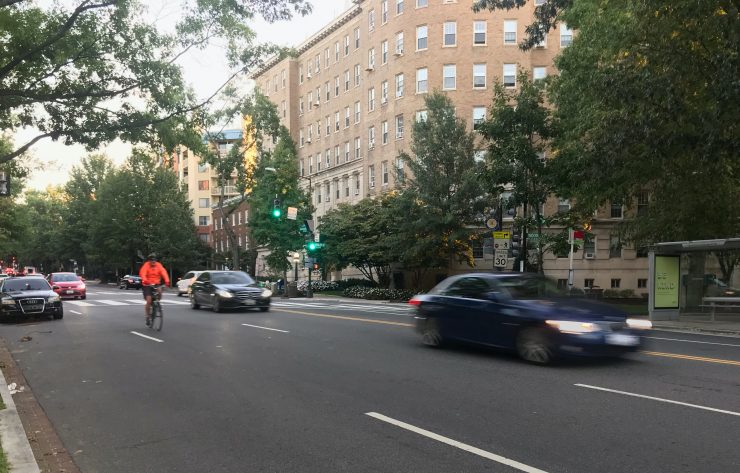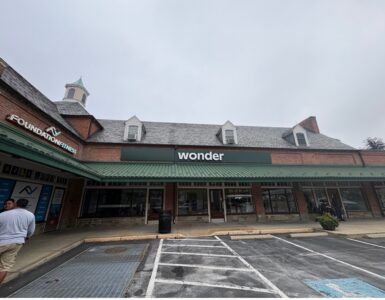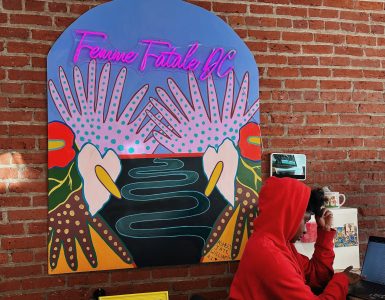Months after four Northwest D.C. neighborhood commissions formalized their support for a proposal to reduce collisions along some of the busiest parts of Connecticut Avenue, DDOT has yet to announce next steps.
The proposal would include adding bike lanes along the 2.7-mile stretch of Connecticut Avenue from Legation Street to Calvert Street, NW. The $4.6 million project would also remove the street’s reversible lane system, which allows traffic to flow in either direction to reduce rush-hour delays.
While vehicles driving along Connecticut Avenue may usually encounter reversible lanes, traffic has not been reversing directions during the coronavirus pandemic. But many residents hope that change becomes more permanent.
“Connecticut Avenue is our main street. … It’s where our grocery store, our pharmacy and everything else is,” said Bob Ward, a Cleveland Park resident of 17 years. “But it’s also like a commuter highway.”
Northwest residents hope that removing the reversible lane system and adding bike lanes can help make Connecticut Avenue safer and prevent confusion for drivers entering a reversible lane. Ward, who heads Cleveland Park Smart Growth, a group of residents focused on development issues, said residents in the area have been concerned about safety along Connecticut Avenue for years.
Efforts to remove the reversible lane system along the traffic-heavy street date back to at least 2003, according to the reversible lane study project website.
Neighborhood commissions in Northwest D.C. have also formalized their support for reducing the speed limit for vehicles from 30 mph to 25 mph.
Robert Finley, who chairs the neighborhood commission representing Cleveland Park, Woodley Park and surrounding areas, said he noticed collective support among residents he spoke with to remove the reversible lanes along Connecticut Avenue.
Neighborhood commissioners expected to hear from the department about next steps during the summer, Finley said. They’re unsure when DDOT will announce whether it will support the proposal, go with another option that doesn’t include bike lanes or keep the reversible lanes in place.
DDOT did not respond to multiple requests for comment for this story.
In response to public questioning, DDOT said the proposal supported by the four neighborhood commissions is a safer option than another option which would remove the reversible lanes without implementing bike lanes. This is because it would reduce collisions between cyclists and vehicles while also keeping pedestrians safe from cyclists riding along the sidewalk.
Janell Pagats, a neighborhood commissioner who represents part of Woodley Park, said she’s witnessed various accidents and near accidents along Connecticut Avenue. Pagats has lived across the street from the Smithsonian’s National Zoo for over 11 years.
Over 1,500 crashes were reported to police within the 2.7 mile Connecticut Avenue stretch during 2015 through 2019, according to a report released by the department in June 2020. Over two-fifths of the collisions took place during reversible lane operation.
The study also said about a third of the crashes reported during reversible lane operation from those five years involved a pedestrian, and about a fifth involved a cyclist.
Pagats, who chooses not to drive a car, said adding bike lanes along Connecticut Avenue can also help the District move away from carbon-intensive methods of transportation.
“We need to make big, bold moves,” Pagats said.















Add comment